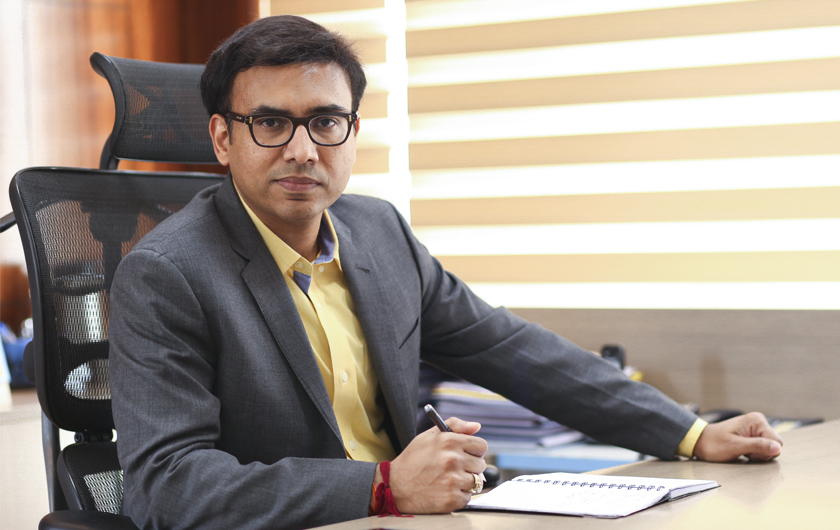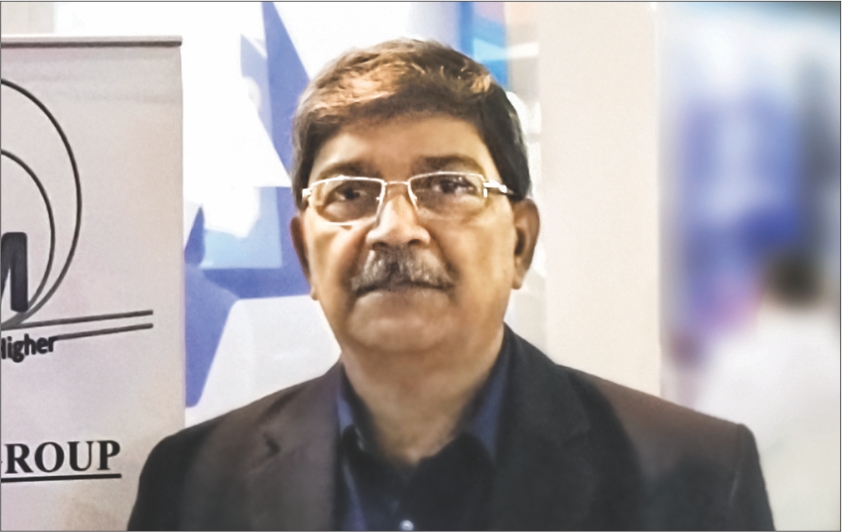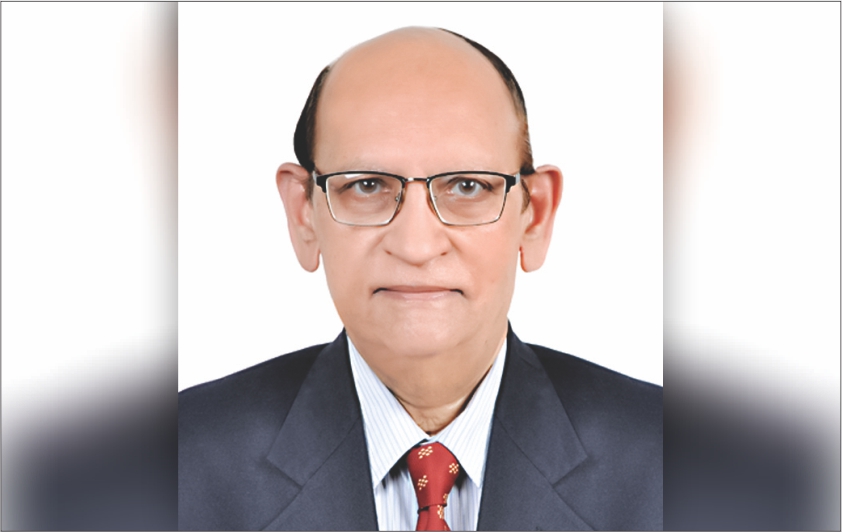As a continuation of the Special Feature published in the previous two editions on the ‘Make in India’ initiative; Team Wire & Cable India interviewed some of the leading key players in the wire and cable industry to analyze the opportunities and the kind of approach that could enable the industry to be self-reliant.

Prime Minister Shri Narendra Modi has urged the nation time and again, championing the idea of Make in India initiative as he said “As we move towards our 75th year of Independence, the entire nation must take a pledge to make ‘vocal for local’ the mantra of the nation.”
Adding New Dimensions: Make in India for the World
In his Independence Day speech, PM Modi repositioned the Make in India agenda as ‘Make in India for the world’ which indicates the aspiration to be a powerful trading nation and a global manufacturing hub which brings quality products, competitive manufacturing, and integration to the fore, into the world economy. “Today, the world is interconnected and interdependent. So, it is the need of the hour that a vast country like India should increase its contribution to the world economy,” he said, adding that the way to do so is by being self-reliant.
The vision of making India “a bigger and more important part of the global economy”, pursuing policies that are efficient, competitive and resilient, and being self-sustaining and creating plenteous opportunities, whilst being innovative in all the spheres and sectors are some of the prominent features on which the success of this initiative is pinned upon.
In the words of Mr. Vipul Nagpal, Founder & Managing Director at Orient Cables India Pvt. Ltd.: “The Indian manufacturing Industry has come a long way from the days of license raj. We have proven in industries such as automotive industry that given the right demand and technical support, India can produce world class products at competitive prices.”
Being Self-sufficient to attain strategic autonomy
The ‘Make in India’ initiative, envisaged by the government, will give a great boost to local manufacturing, generate massive employment opportunities and open up avenues that will strengthen the economy of the nation. Most importantly, our country could have strategic autonomy in terms of manufacturing and when the need arises, all suppliers within the country will step up and rise to the occasion. In fact, to solidify our position in the global marketplace, we need to work actively towards being self-sufficient.
Mr. Anurag Agarwal, Executive President-Strategic Initiatives & International Businesses at Polycab India Limited affirms positively that: “India has a very strong manufacturing base and with strong push from the Government for promoting ‘Make in India’, it is inevitable now for the industries to work towards decreasing their dependencies from imports from China and other countries.”
The ‘Make in India’ and ‘Self Reliant’ or ‘Aatmanirbhar Bharat’ initiatives are a significant step forward in the direction of bolstering up the economy of our nation. Team Wire & Cable India interviewed a few Indian players in the wire and cable industry as a continuation of the feature published in the two previous editions, on the opportunities they envision for themselves and the whole sector and the readiness of the sector to be self- reliant.
“India plans to become the manufacturing powerhouse post-pandemic, and every industry, including the wire and cable sector is wholeheartedly eager and willing to contribute their collective efforts.”

Wire & Cable India: What opportunities lie ahead for you?
Abhishek Gupta: As per the estimated statistics are concerned, India’s GDP is expected to double up by the next decade, with a 7% annual growth rate. The electricity sector is going to be the highest contributing industry in the growth. Since the electricity demand is expected to multiply in the present forecast period, thus, the supplies of the wire and cable industry will eventually increase to meet the increase in demand across the nation. The predicted growth scale has emerged in the need of new electrical infrastructure and manufacturing units for electrical accessories. There is a vast opportunity for this sector to grow in the coming years for which the infrastructure needs to be optimized.
This is a boost for India’s wire and cable industry as the need for power generation infrastructure is picking up the pace. In short, there is a great scope of growth for the wire and cable industry in India post-pandemic. It is time to prepare and improvise on the work methodologies to achieve growth.
WCI: What is the preparedness level of the Indian manufacturing sector to be self-reliant and moreover, make India a global manufacturing hub, and what are the key areas of improvisation?
AG: The pandemic has struck hard to the global industries and India, in particular, is preparing to stand back up in all the sectors. The Indian manufacturing sector is now improvising new measures. With the government’s initiatives – such as Vocal for Local and Atmanirbhar Bharat, the wire and cable industry of India is now looking forward to procure raw materials from the Indian manufacturers only. It is always a better idea to turn to the resources that the nation has, rather than approaching to foreign countries for additional assistance. India needs more local manufacturers, and to boost up the domestic manufacturing, new and innovative ideas are being presented to help this cause. The raw materials that the wire and cable industry uses and integrates will be modified in this post-pandemic phase.
Although there has been a great disruption in the country’s GDP and supply chain during the pandemic, there are hopes to make the ‘Make in India’ dream a success. India plans to become the manufacturing powerhouse post-pandemic, and every industry, including the wire and cable sector is wholeheartedly eager and willing to contribute their collective efforts.
“I am sure that the cable industry will rise and very soon will replace the Chinese cables by Indian cable products in the International markets.”

Wire & Cable India: What opportunities lie ahead for you?
Vijay Kumar Bajaj: We all are passing through a very unusual disruptive situation due to COVID-19 pandemic in India as well as in several of the overseas countries. Several countries around the world have gone through a period of prolonged lockdown. This crisis has certainly impacted Indian economy along with many countries. The overall GDP is showing a downward trend and the crisis situation is likely to continue for a few more months. This has largely affected the demand and also the supply chain, especially the incoming raw materials from imports. The reduction in domestic demand has led to a fierce competition in the market. A lot of manufacturers have chased a few market inquiries, thus, the price of cables has been extremely competitive.
This situation has compelled the cable industry to start exploring for export opportunities as the overseas market is still in a much better position than the domestic market. There are quite favorable and conducive business conditions for India, due to a negative perception being developed against China in several countries affected by the pandemic. The product quality of Chinese goods itself was quite questionable; but only due to low prices; the customers were still using Chinese products. Furthermore, the supplies from China have not been as consistent as before. Hence, I would like to lay emphasis on the idea that the Indian cable industry should direct their focus on expanding their reach globally to replace China in the cable business.
WCI: What is the preparedness level of the Indian manufacturing sector to be self-reliant and moreover make India a global manufacturing hub and what are the key areas of improvisation?
VKB: The disruption of the global supply chain and the imports from China has pushed domestic cable manufacturers to reach out to raw material manufacturers to develop acceptable products. The domestic raw material manufacturers always had the right kind of and high quality products, however, since it was a little costlier compared to the imports, thus, they were not getting good volume to derive economy of scale. The domestic raw material manufacturers have also understood this constraint and are co-operating by developing import substitutes at competitive prices, and I feel that such imports will stop even after the business conditions improve.
Correspondingly, the cable manufacturers are also reviewing the design and productivity parameters to make their products competitive, and it will help explore global market more aggressively. The design bill of materials is being reviewed, manufacturing tolerances are reduced, and the speed of the production line can be increased to help increase productivity, reduce scrap and getting the produce right and perfectly in the first time itself, without any defects has become a norm. In fact, the employees are accomplishing the tasks in a sincere way, and are giving their best in the current situation.
Due to the finance crunch faced by many manufacturers in the industry, the commercial terms are hardening and market in well absorbing a disciplined financial working. No entity or institution is in a position to give prolonged credits and financial assistance. However, I am quite confident that the cable industry will rise from this whole ongoing crisis and will replace the Chinese cable products in the International markets.
“There is still a long way to go but I am sure with concerted efforts, India can make the difference and make a mark on global landscape.”

Wire & Cable India: What opportunities lie ahead for you?
Anurag Agarwal: While COVID-19 has brought on surface unprecedented challenges for everyone across the globe, it is also high time to find right opportunities in this crisis. Every company has certain strengths on which it can leverage and so can Polycab India. While we have witnessed a complete lockdown during April which had resulted in a washout with no business activity whatsoever; fortunately due to our controlled expense management and strong financials, we came back stronger and are ready to meet the demand upsurge which is driven by “Make in India” sentiments and availability issues – thanks to our large expanded supply chain we could fulfill within no time.
We are anticipating a significant increase in the Government’s investment in infrastructure which will spur growth and bring demand for us, be it railways, highways, metros and so on.
There is a major shift seen where business focus is shifting from urban to rural sector which is largely overlooked so far. The new normals are emerging wherein due to significant movement of people from large cities to villages, bringing in demand and business houses are seeing this situation as an opportunity to enhance their rural supply chains to leverage.
There is a good traction seen from exports business which again is a good opportunity which we look at. Due to the COVID-19 related disruptions, supply chains across the globe are affected and coupled with geopolitical scenarios, we are quite in an advantageous position.
WCI: What is the preparedness level of the Indian manufacturing sector to be self-reliant and moreover make India a global manufacturing hub and what are the key areas of improvisation?
AA: India has a very strong manufacturing base and with strong push from the Government for promoting “Make in India”, it is inevitable now for the industries to work towards decreasing their dependencies from imports from China and other countries. We have seen big announcements from certain large Corporates to cut import dependencies and more is going to follow.
While manufacturers will surely put all efforts to become self reliant, there is a lot which Government needs to do to encourage this.
- Improving overall infrastructure,
- Simplifying processes to enhance ease of doing business,
- Accelerate the bilateral free trade agreements with as much countries as possible which will surely boost exports.
- Protection to domestic industries by way of imposing safeguard duties,
- Putting mandatory conditions of using “Make in India” in majority of Government spending
- These are few suggestions making round in all business forums which needs to be expedited and acted upon on high priority.
Some of the state governments have announced fiscal incentives to the companies moving their manufacturing from China to India. This is a welcome step which should be followed by all the state governments and industry forums needs to strongly advocate for these through embassies and various other forums. We need to publish success stories of joint ventures and large manufacturing setups which are highly successful in India like automobile, electronics, mobile phones manufacturing to infuse confidence to Industries planning to come to India.
There is still a long way to go but I am sure with concerted efforts, India can make the difference and make a mark on the global landscape.
“With long pending changes in areas like labor laws, a friendlier and practical tax regime, Indian manufacturing can reach its true potential.”

Wire & Cable India: What opportunities lie ahead for you?
Vipul Nagpal: With the prevailing anti-China sentiment globally, we hope to get more export and import replacement opportunities for wire and cable products. The resultant lockdown in response to the pandemic has also highlighted the urgent need for strong internet connectivity which has become a necessity. There are some major investments which are taking place in augmenting the telecom infrastructure and also to bring the last mile connectivity. All this suggests that there is going to be a robust demand for the optical fiber networks and the copper telecom cables going forward.
WCI: What is the preparedness level of the Indian manufacturing sector to be self-reliant and moreover make India a global manufacturing hub and what are the key areas of improvisation?
VN: The Indian manufacturing industry has come a long way from the days of license raj. We have proven in industries such as automotive industry that given the right demand and technical support, India can produce world class products at competitive prices. Despite having challenges such as archaic laws, and no direct support of the government authorities unlike in other countries, Indian manufacturing has thrived. With long pending changes in areas such as labor laws, a friendlier and practical tax regime, Indian manufacturing can reach its true potential. It takes many years of sustained favorable climate for supply chains to develop which are critical for efficient manufacturing.
On a lighter note, I would like to underscore that running a manufacturing company successfully in India is not for the faint hearted and it takes a lot of grit and perseverance. The whole society at large needs to shed its image created by Bollywood of a factory owner as a “heartless, blinded by money, and a labor exploiting man”. On the contrary, the manufacturers are some of the largest social workers, who create livelihood for people, contribute taxes for government and also play a significant role in bolstering up the economic growth. Managing a manufacturing business requires a great deal of dedication and hard work, quite similar to a farmer tilling his fields in rain and sunshine for crops. We are looking forward to the acknowledgement and support of the government as with the optimum support and favorable policies to the manufacturing industry, our country can do wonders.
“After the un-lockdown 4.0, the industry will try to resume operation to its maximum utilization.”

Post-COVID, the wire and cable industry will face demand recession as well as a financial crunch. The industry is a support industry for a number of engineering and infrastructure industries and in all the spheres of the domestic life.
As bulk consumption happens in the engineering industry, and particularly, one of the major outputs of GDP is in automobiles, which is negative owing to the high rate of GST, there is a setback in wire demand.
Again, because of the poor collection of GST revenue and a large amount on social expenditure, the infrastructure pending by the Government is minimal and will be delayed. However, as the Government is seriously considering for reduction of GST in automobiles, the speed up in demand is expected. Although the wire and cable industry expects the increase in consumption of wires in railway corridors, again those will be at a slow pace, owing to a shortage of exchequer caused by sudden defense expenditure.
After the un-lockdown 4.0, the industry will try to resume operation to its maximum utilization; however, the industry’s efforts may witness two major impediments- shortage of manpower and the steel crisis.
It is now clear that the industry will have to face the challenges in terms of-
- Shortage of steel
- Shortage of manpower
- Shortage of liquidity
- Slow pace in government projects
As the steel price became exceptionally high, the export became unviable, even though, in some parts of the world, the anti-China sentiment is still quite prevalent. It is worthwhile to mention that the fall in currency conversion has also made the export completely unviable. Thereby, the immediate future of the wire and cable industry seems to be quite lackluster.
“I believe with the Government focusing on developing the sectors that we lagged in, we shall see an all-inclusive growth.”

Wire & Cable India: What opportunities lie ahead for you?
Abhivandan Lodha: India as a country was already booming before COVID times and compared to the rest of the world, we were growing at a much faster rate. With the new focus on going vocal for local, this demand will only spurt and there will be an ample opportunity for all manufacturers. I see a demand to double within a couple of years.
WCI: What is the preparedness level of the Indian manufacturing sector to be self-reliant and moreover make India a global manufacturing hub and what are the key areas of improvisation?
AL: As a country, we need to be highly competitive. China has set standards that are very high, in terms of scale, but India can provide a healthy mix of quality and volume. We have already started ramping up our production capacity. I believe with the Government focusing on developing the sectors that we lagged in, we shall see an all-inclusive growth. As a nation, we should start focusing on being self-sufficient at every level.
“We at Wipe Hotwire, looking at the prospects of high demand for certain category of wires from the domestic sector as well as exports, feel the immediate need for automation and scaling up capacities.”

Wire & Cable India: What opportunities lie ahead for you?
Lalit Mohan Mathur: We at Wipe Hotwire, who make and export specialty wire and cable, feel the opportunities are great. First, our prime markets like Europe and North America, are receiving a tremendous demand stimulus from their respective governments in various forms of subsidies and industry support. We can feed into this demand by supplying products already developed and certified by the accredited agencies. Further, our Government is also extending support to exporting MSMEs by way of extending MEIS Scheme, easier loaning and equity funding schemes. The current exchange rates are also favorable.
Secondly, with anti-China sentiment growing in the developed countries and India and it’s achievements in prime focus globally, it should be easier for us to gain entry in these prestigious markets. We are already finding an improved response in this regard.
Thirdly, there is still a very large quantity of import of specialty wire and cable from China and other countries. Now, because of the problems and delays in importing especially from China, Indian manufacturing sector is keenly looking for equivalent replacements from indigenous sources. Wipe Hotwire is feeling the impact of this already and we are excited about finding ready acceptance of our products.
WCI: What is the preparedness level of the Indian manufacturing sector to be self-reliant and moreover make India a global manufacturing hub and what are the key areas of improvisation?
LMM: We at Wipe Hotwire, looking at the prospects of high demand for certain category of wires from the domestic sector as well as exports, feel the immediate need for automation and scaling up capacities. In spite of CAPEX restrictions due to business not being in full flow, we are moving ahead with man-machine optimization and indigenous machines purchase and development. Also, to be a global manufacturing hub, various quality improvement plans and trainings have been initiated. A major initiative is taken up towards getting product certifications done through agencies like MIL, UL, CSA, VDE, BIS etc. which are necessary to get acceptance for import substitution products and launch of new products for the export market. This will be Wipe Hotwire’s contribution to make India a global manufacturing hub and support the “Make in India” initiative.




